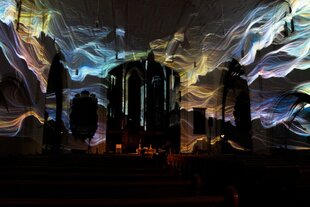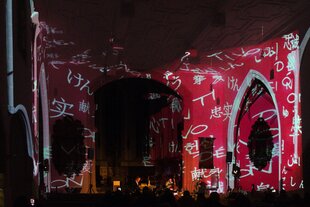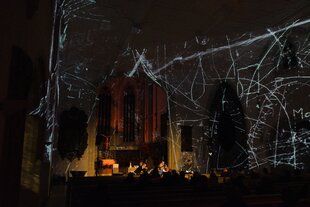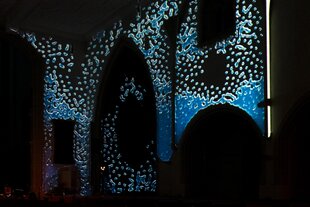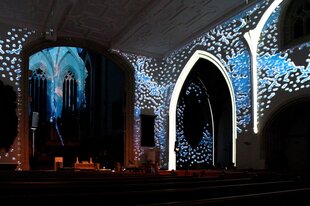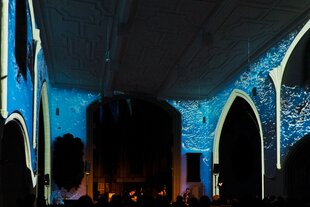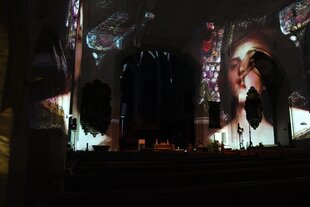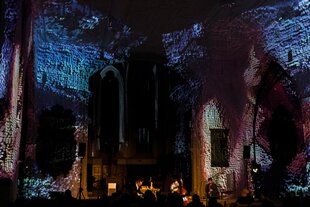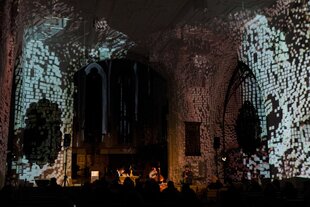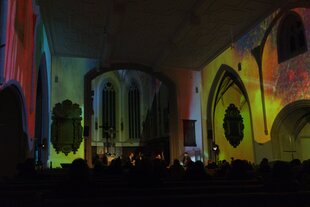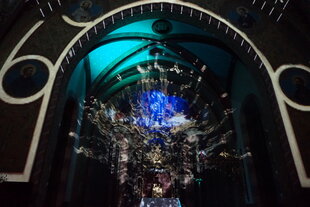Karl Ivar Refseth: Lights
I was reluctant to put this up. This is not what I am really up to, too much virtual, too little interaction. Also, actually there's already a lot of (some quite good even!) projection mappings out there.
Still, I decided to show it, as there's some hidden interesting aspects in the project.
The Show
Karl Ivar Refseth is a norwegian jazz musician and composer playing the vibraphone. I developed a light and projection show supporting his atmospheric music. The material used for projection ranges from simple colors (scenic lighting) to highly complex Animations in 3D space. Animations are comparatively slow and gentle most of the time. But they try to interact with the real world beyond the actual mapping. A large part of the show is controlled live, being able to react to the music is crucial.
- Specific Animations are created for each each performance - or to be more precise: for each space.
- Of course, content is produced to highlight parts of the actual room. This is standard procedure and helps to accentuate the structure that is present.
- Other content is produced with perspective shifts, taking into account the actual room and the position of the projectors. Like that, an image/animation looks undistorted from the visitors position - although it is projected spanning several walls (at different angles). This is the opposite to the above effect: Borders and alignments of present structures are blurred, sort of dissolve and the room "opens up".
- Content is produced to make the virtual world and real world work together - over and above the actual mapping. An example is projected fluid, which runs along the real world objects edges or borders. See example video below.
The backend approach
Our Workflow makes these kind of projects accessible to “normal artists” and subcultural events.
We are able to set up a project with - set aside the content described above - as little effort as possible - in contrast to most modern 3D mapping projects out there. This applies to both the technical effort (financial) and the set-up effort (time available on site). Of course, this may bring some reductions in precision, although these are less significant than you probably think.
- Using actual (affordable) mid range graphics, one "normal" computer is able to run a show with up to 4 Projectors.
- The mapping-software is self-written (still in Beta, but already used for production). It is quite powerful, but has an uncommon focus: quick (and dirty?) setup has to be possible, also the ability to run decent shows with little to almost no preparation.
- Other self-programmed Apps and some self-built hardware can be used to create live content.
- Workflow is set up in a way that photos of the site (even found on the web) are sufficient to create specific content including the fluid simulations. No need for 3D-models or the like. A prior site visit is of course preferable, but not a necessity.
The show was started as part of the Tam Tam "Kirchenkonzert"-series, greetings goes out to Hias, who more or less started this.
